Table of Contents
ANTONIO CARLOS “TOM” JOBIM – TRISTE (Guitar arr. TAB SHEET MUSIC, partitura)

Lyrics:
Triste é viver na solidão
Na dor cruel de uma paixão
Triste é saber que ninguém
Pode viver de ilusão
Que nunca vai ser nunca vai dar
O sonhador tem que acordar
Tua beleza é um avião
Demais p’rum pobre coração
Que pára pra te ver passar
Só pra me maltratar
Triste é viver na solidão
Best Sheet Music download from our Library.
‘Triste’ (meaning ‘Sad’ in English) is a bossa nova song composed in 1966 by Antônio Carlos Jobim, who also wrote the lyrics in English and Portuguese.
Background
Jobim wrote the song in late 1966 while staying at the Sunset Marquis Hotel in Los Angeles, while waiting for Frank Sinatra to return from a vacation in Barbados to begin recording his album Francis Albert Sinatra & Antônio Carlos Jobim (1967).
The first recording of the song was an instrumental version by Jobim for his 1967 Wave album. Sinatra recorded it with Jobim two years later in the sessions for his planned second album, SinatraJobim, which was eventually released as Sinatra & Company’s Side A (1971).
Jobim recorded an English vocal version in 1980 on the album Terra Brasilis.
Antonio Carlos Jobim
Antônio Carlos Brasileiro de Almeida Jobim (January 25, 1927 – December 8, 1994), also known as Tom Jobim was a Brazilian composer, pianist, composer, arranger, and singer. Considered one of the great exponents of Brazilian music, Jobim internationalized bossa nova and, with the help of leading American artists, fused it with jazz in the 1960s to create a new sound with popular success. As such, he is sometimes referred to as the ‘father of bossa nova’.
Jobim was a major force behind the creation of the bossa nova style, and his songs have been performed by many singers and instrumentalists internationally.
Please, subscribe to our Library.
If you are already a subscriber, please, check our NEW SCORES’ page every month for new sheet music. THANK YOU!
In 1965, the Getz/Gilberto album was the first jazz record to win the Grammy Award for Album of the Year. It also won for Best Jazz Instrumental Album – Individual or Group and for Best Engineered Album, Non-Classical. The album’s single ‘Garota de Ipanema’ (‘The Girl from Ipanema’), one of the most recorded songs of all time, won Record of the Year.
Jobim composed many songs that are now included in the standard jazz and pop repertoires. The song ‘Garota de Ipanema’ has been recorded more than 240 times by other artists.
His 1967 album with Frank Sinatra, Francis Albert Sinatra and Antônio Carlos Jobim, was nominated for Album of the Year in 1968.
Antônio Carlos Jobim was born in the middle-class district of Tijuca in Rio de Janeiro. His father, Jorge de Oliveira Jobim (São Gabriel, Rio Grande do Sul; 1889-1935), was a writer, diplomat, teacher and journalist.
He came from a prominent family, being the great-nephew of José Martins da Cruz Jobim, a senator, private councilor, and physician to Emperor Dom Pedro II. While studying medicine in Europe, José Martins added Jobim to his surname, paying homage to the town his family came from in Portugal, the parish of Santa Cruz de Jovim, Porto.
His mother, Nilza Brasileiro de Almeida (c. 1910-1989), was of partially indigenous descent from northeastern Brazil.
When Antônio was still a baby, his parents separated and his mother moved with her children (Antônio Carlos and his sister Helena Isaura, born February 23, 1931) to Ipanema, the beachside neighborhood that the composer would later would celebrate in their songs.
In 1935, when Jobim’s elder died, Nilza married Celso da Frota Pessoa (died February 2, 1979), who would encourage the career of her stepson. It was he who gave Jobim his first piano. As a young man of impoverished youth, Jobim made a living playing in nightclubs and bars and later as an arranger for a record label before beginning to achieve success as a songwriter.
Musical influences
Jobim’s musical roots were planted firmly in the work of Pixinguinha, the legendary musician and composer who pioneered modern Brazilian music in the 1930s. His teachers included Lúcia Branco and, beginning in 1941, Hans-Joachim Koellreutter, a German composer who lived in Brazil and introduced atonal and twelve-tone composition in the country.
Jobim was also influenced by French composers Claude Debussy and Maurice Ravel, and by Brazilian composers Ary Barroso and Heitor Villa-Lobos, who has been described as ‘Jobim’s most important musical influence’.
Among many topics, his lyrics talked about love, self-discovery, betrayal, joy, and especially about birds and the natural wonders of Brazil, such as the ‘Mata Atlântica’ forest, characters from Brazilian folklore, and his native city of Rio de Janeiro.
In the 1940s, Tom Jobim began playing the piano in bars and nightclubs in Rio de Janeiro, and in the early 1950s, he worked as an arranger at the Continental Studio, where he recorded his first composition, in April 1953, when Brazilian singer Mauricy Moura recorded Incerteza, a Tom Jobim composition with lyrics by Newton Mendonça.
Jobim rose to prominence in Brazil when he teamed up with poet and diplomat Vinicius de Moraes to write the music for the play Orfeu da Conceição (1956).
The most popular song on the show was ‘Se Todos Fossem Iguais A Você’ (‘If Everyone Were Like You’). Later, when the play was adapted into a film, producer Sacha Gordine did not want to use the play’s existing music. Gordine asked De Moraes and Jobim for a new score for the film Orfeu Negro, or Black Orpheus (1959). Moraes was at the time in Montevideo, Uruguay, working for the Itamaraty (the Brazilian Ministry of Foreign Affairs), so Jobim and he were only able to write three songs, mainly by phone (‘A felize’, ‘Frevo’ and ‘Frevo’). Or nosso love ‘).
This collaboration proved successful, and de Moraes went on to write the lyrics for some of Jobim’s most popular songs.
In 1958, the Brazilian singer and guitarist João Gilberto recorded his first album with two of Tom Jobim’s most famous songs: Desafinado and Chega de Saudade. This album inaugurates the Bossa Nova movement in Brazil. The sophisticated harmonies of his songs caught the attention of jazz musicians in the United States, mainly after Tom Jobim’s first performance at Carnegie Hall in 1962.
A key event in making Jobim’s music known in the English-speaking world was his collaboration with American jazz saxophonist Stan Getz, Brazilian singer João Gilberto, and Gilberto’s wife at the time, Astrud Gilberto, resulting in two albums, Getz/Gilberto. (1963) and Getz/Gilberto Vol. 2 (1964).
The release of Getz/Gilberto created a bossa nova craze in the United States and later internationally. Getz had previously recorded Jazz Samba with Charlie Byrd (1962) and Jazz Samba Encore! with Luiz Bonfa (1964). Jobim wrote many of the songs on Getz/Gilberto, which became one of the best-selling jazz albums of all time, and turned Astrud Gilberto, who sang on ‘Garota de Ipanema’ (The Girl from Ipanema) and ‘ Corcovado’, into an international sensation.
At the 1965 Grammy Awards, Getz/Gilberto won the Grammy Award for Album of the Year, the Grammy Award for Best Jazz Instrumental Album, Individual or Group, and the Grammy Award for Best Non-Classical Engineered Album. ‘The Girl from Ipanema’ won the Grammy Award for Record of the Year. Among his later successes is ‘Águas de Março’ (Waters of March 1972), for which he wrote lyrics in both Portuguese and English, and which was later translated into French by Georges Moustaki (Les Eaux de Mars, 1973 ).
In early 1994, after finishing his Antonio Brasileiro album, Jobim complained to his doctor, Roberto Hugo Costa Lima, of urinary problems. He underwent surgery at Mount Sinai Hospital in New York City on December 2, 1994.
On December 8, while recovering from an operation, he suffered a cardiac arrest caused by a pulmonary embolism and two hours later, another cardiac arrest, from which he died. .
He was survived by his children and grandchildren. His last album, Antonio Brasileiro, was released posthumously three days after his death.
His body remained in state until he was duly buried on December 20, 1994. He is buried at the Cemitério São João Batista in Rio de Janeiro.
Jobim’s Legacy
Jobim is widely considered to be one of the most important composers of the 20th century. Many of his songs are jazz standards.
American jazz singers Ella Fitzgerald and Frank Sinatra featured Jobim’s songs on their albums Ella Abraça Jobim (1981) and Francis Albert Sinatra & Antônio Carlos Jobim (1967), respectively. The 1996 CD Wave: Antonio Carlos Jobim’s Songbook included performances of Jobim themes by Oscar Peterson, Herbie Hancock, Chick Corea, and Toots Thielemans.
Jobim was an innovator in the use of sophisticated harmonic structures in popular songs. Some of his melodic turns, like the melody that he insists on the major seventh of the chord, became common in jazz after he used them.
Brazilian collaborators and performers of Jobim’s music include Vinicius de Moraes, João Gilberto (often credited as co-creator or creator of bossa nova), Chico Buarque, Edu Lobo, Gal Costa, Elis Regina, Sérgio Mendes, Astrud Gilberto and Flora Purim, Eumir Deodato and conductor/composer Claus Ogerman arranged many recordings of Jobim’s tunes.
He won a Lifetime Achievement Award at the 54th Grammy Awards in 2012. As a posthumous tribute, on January 5, 1999, the Municipality of Rio de Janeiro changed the name of Rio’s Galeão International Airport, located on Governador Island, to bear the name of the composer. Galeão airport is explicitly mentioned in his composition ‘Samba do Avião’. In 2014, Jobim was posthumously inducted into the Latin Songwriters Hall of Fame.
In 2015, Billboard named Jobim one of the 30 most influential Latin artists of all time. [twenty-one]
American contemporary jazz singer Michael Franks dedicated his 1995 album Abandoned Garden to Jobim’s memory. English singer-songwriter George Michael frequently acknowledged Jobim’s influence. His 1996 album Older was dedicated to Jobim, and he recorded ‘Desafinado’ on Red Hot + Rio (1996) with Astrud Gilberto.
The official mascot of the 2016 Summer Paralympics in Rio de Janeiro, Tom, was named after him.
Discography and compositions
| Studio Albums: 1963: El compositor de Desafinado, juega ( Verve )1965: El maravilloso mundo de Antônio Carlos Jobim ( Warner Bros. Records )1966: Amor, cuerdas y Jobim ( Warner Bros. Records )1967: Un cierto señor Jobim ( Warner Bros. Records )1967: Ola ( CTI / A&M )1970: Marea (A&M)1970: Flor de piedra (CTI)1973: Jobim ( MCA )1976: Urubu (Warner Bros.)1980: Terra Brasilis (Warner Bros.)1987: Passarim (Verve)1995: Antônio Brasileiro ( Colombia )1995: Inédito ( Ariola )1997: Minha Alma Canta (Lumiar) |
Cooperations:
- 1954: Sinfonia do Rio de Janeiro (Continental), con Billy Blanco
- 1956: Orfeu da Conceição (Odeón), con Vinicius de Moraes
- 1957: “O Pequeno Príncipe” (Festa), audiolibro del que Jobim compuso la banda sonora
- 1961: Brasilia – Sinfonia Da Alvorada (Colombia), con Vinicius de Moraes
- 1964: Getz / Gilberto (Verve)
- 1964: Caymmi Visita Tom (Elenco / Polygram / Philips ), con Dorival Caymmi
- 1967: Francis Albert Sinatra y Antônio Carlos Jobim (Reprise)
- 1974: Elis & Tom ( Philips ), con Elis Regina
- 1977: Miúcha & Antônio Carlos Jobim ( RCA ), con Miúcha
- 1979: Miúcha & Tom Jobim ( RCA ), con Miúcha
- 1981: Edu & Tom ( Philips ), con Edu Lobo
- 1983: Gabriela ( RCA ), banda sonora original de la película “Gabriela, Cravo e Canela”
Browse in the Library:
| Artist or Composer / Score name | Cover | List of Contents |
|---|---|---|
| Billie Eilish – Bad Guy Sheet Music Piano solo |
 |
|
| Billie Eilish – Dont Smile At Me Songbook (Billie Eilish) Piano Vocal Guitar |
 |
Billie Eilish – Dont Smile At Me Songbook (Billie Eilish) Piano Vocal Guitar contents |
| Billie Eilish – Happier Than Ever Piano vocal guitar (Billie Eilish) |
 |
Billie Eilish – Happier Than Ever Piano vocal guitar (Billie Eilish) |
| Billie Eilish – Therefore I Am Sheet Music Piano vocal Guitar chords |
 |
|
| Billie Eilish – What Was I Made For Billie Eilish piano solo arr. from Barbie OST | Billie Eilish – What Was I Made For Billie Eilish piano solo arr. 1st page | |
| Billie Eilish – What Was I Made For easy piano with lyrics from Barbie OST | Billie Eilish – What Was I Made For easy piano-with lyrics 1st page | |
| Billie Eilish Copycat |
 |
|
| Billie Eilish For Beginning Piano Solo (Billie Eilish) |
 |
Billie Eilish For Beginning Piano Solo (Billie Eilish) |
| Billie Eilish ilomilo (Piano Solo) |
 |
|
| Billie Eilish My Boy |
 |
|
| Billie Holiday – John Szwed The Musician and the Myth (Book) |
 |
|
| Billie Holiday – The Songbook (piano-vocal-guitar chords) |
 |
Holiday, Billie – The Songbook |
| Billie Holiday Diana Ross Songbook |
 |
Billie Holiday Diana Ross Songbook |
| Billie Holiday Songbook |
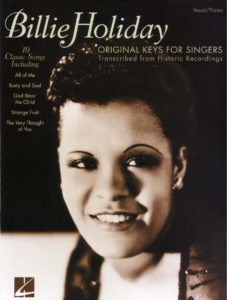 |
BILLIE HOLIDAY SONGBOOK |
| Billy Elliot – Electricity |
 |
|
| Billy Elliot Vocal Score |
 |
Billy Elliot Vocal Score |
| Billy Idol – Guitar Songbook | Billy Idol – Guitar Songbook | |
| Billy Joel – A Collection Of Songs |
 |
Billy Joel A Collection Of Songs |
| Billy Joel – Best Of Piano Solos | Billy Joel – Best Of Piano Solos | |
| Billy Joel – Greatest songs (Piano & Voice) |
 |
BILLY JOEL – GRATEST SONGS (PIANO & VOICE) |
| Billy Joel – Just the way you are |
 |
|
| Billy Joel – Just The Way You Are as performed by Diana Krall) Sheet Music Piano Vocal Guitar Chords | Billy Joel – Just The Way You Are as performed by Diana Krall) Sheet Music Piano Vocal Guitar Chords | |
| BILLY JOEL – PIANOMAN | BILLY JOEL PIANOMAN | |
| Billy Joel – Root Beer Rag | ||
| Billy Joel – Shes Always A Woman | ||
| Billy Joel – The Words And Music of – by Ken Bielen (Book) |
 |
|
| Billy Joel – Uptowngirl | ||
| Billy Joel Complete Volume 1 (Piano vocal Guitar sheet music) |
 |
Billy Joel Complete Volume 1 (Piano vocal Guitar sheet music) |
| Billy Joel Complete Volume 2 (Piano vocal Guitar sheet music) |
 |
Billy Joel Complete Volume 2 (Piano vocal Guitar sheet music) |
| Billy Joel Fantasies And Delusions (solo piano) |
 |
|
| Billy Joel Favorites Keyboard Book (Billy Joel) |
 |
Billy Joel Favorites Keyboard Book (Billy Joel) |
| Billy Joel Rock Score |
 |
|
| Billy Joel The Keyboard Book |
 |
Billy Joel Keyboard Book  |
| Billy Preston – best of, Piano & Vocal songbook |
 |
Billy Preston – best of Piano & Vocal songbook |
| Billy Ray Cyrus – Old Town Road [Remix] Sheet Music |
 |
|
| Billy Strayhorn Chelsea Bridge |
 |
|
| Billy Strayhorn Lotus Blossom Transcription As Played By Duke Ellington In 1967 |
 |
|
| Billy Strayhorn Lush Life songbook Vol 66 |
 |
Billy Strayhorn Lush Life songbook Vol 66 |
| Billy Strayhorn Satin Doll | Billy Strayhorn Satin Doll | |
| Billy Strayhorn Take The A Train | Billy Strayhorn Take The A Train | |
| Billy Strayhorn Take The A Train arranged for Piano by Billy Strayhorn |
 |
Billy Strayhorn Take The A Train Full Score |
| Billy Taylor Modern Jazz Piano Solos |
 |
|
| Billy Taylor The Jazz Life Of Dr. Billy Taylor (Billy Taylor Teresa L. Reed) Book |
 |
|
| Birdland Joe Zawinul Arr Semton Barlas – Full concert band |
 |
|
| Birdy – Piano Vocal Songbook |
 |
 |
| Birth Of The Blues, The Jimmy Lally sheet music |
 |
|
| Bizet Georges – Habanera (From The Opera Carmen) Piano Solo Arr. (Musescore File).mscz | ||
| Bizet – Marche Des Rois Easy Piano |
 |
|
| Bizet, Georges Habanera (From The Opera Carmen) Piano Solo Arr. |
 |
|
| Bjork – Bachelorette |
 |
|
| Bjork – Hunter Sheet Music |
 |
|
| Bjork – Joga |
 |
|
| Bjork – Oh so quiet |
 |
|
| Bjork – Unravel |
 |
|
| Bjorn Eidsvag Eg Ser Piano Solo sheet music |
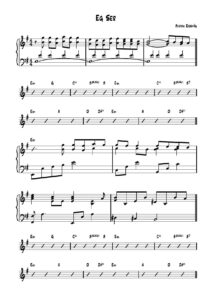 |
|
| Black – Wonderful Life (Piano and vocal sheet music) |
 |
|
| Black – Wonderful Life (Piano And Vocal Sheet Music) (Musescore File).mscz | ||
| Black Eyed Peas Don’t Lie Transcription By Deusde Coppen |
 |
|
| Black Eyed Peas Shut Up Transcription By Deusde Coppen |
 |
|
| Black Orpheus ( “Manha de Carnaval” or “A Day in the Life of a Fool”) Luis Bonfá | Black Orpheus | |
| Black Orpheus (Manha De Carnaval) Jazz Lead sheet | Black Orpheus(Manha De Carnaval) | |
| Black Sabbath – Guitar Signature Licks (Guitar Songbook) |
 |
Black Sabbath – Guitar Signature Licks (Guitar Songbook) |
| Black Sabbath Guitar Songbook |
 |
Black Sabbath Guitar Songbook |
| Black Sabbath Master Of Reality Guitar tab with lyrics |
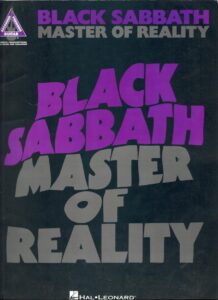 |
Black Sabbath Master Of Reality Guitar tab with lyrics |
| Black Sabbath Paranoid Guitar Songbook |
 |
Black Sabbath Paranoid Guitar Songbook |
| Blackbeauty – Baby Beauty – Danny Elfman | ||
| Blackbeauty – Main Theme – Danny Elfman | ||
| Blackpink – How You Like That | Blackpink – How You Like That | |
| BlackPink – Play with Fire (Piano Solo sheet music) |
 |
|
| Blade Runner – Love Theme (piano) |
 |
Blade_Runner_-_Love_Theme |
| Blade Runner – Love Theme Vangelis (arr. For Keyboard) |
 |
|
| Blade Runner – Love Theme Vangelis (For Keyboard) (Musescore File).mscz | ||
| Blake Neely – How To Play From A Fake Book Keyboard Edition Faking Your Own Arrangements From Melodies and Chords |
 |
Blake Neely – How To Play From A Fake Book KeyboardBlake Neely – How To Play From A Fake Book Keyboard |
| Blessings Arr Phillip Keveren The Phillip Keveren Series Piano Solo |
 |
Blessings Arr Phillip Keveren The Phillip Keveren Series Piano Solo |
| Blind Guardian – The Eldar | ||
| Blink 182 – All The Small Things | ||
| Bliss Concerto For Piano And Orchestra |
 |
|
| Bloch, Ernest Ten Pieces For Children For Piano Enfantines |
 |
Bloch, Ernest Ten Pieces For Children For Piano Enfantines |
| Blondie Anthology |
 |
Blondie Anthology |
| Blondie The Best Of – Piano vocal Guitar chords songbook |
 |
Blondie The Best Of – Piano vocal Guitar chords songbook |
| Blowing In The Wind – Bob Dylan (Harmonica And Guitar) With Sheet Music (Musescore File).mscz | ||
| Blue – Breathe Easy | ||
| Blue Bossa (Jazz Piano Solo) Kenny Dorham |
 |
|
| Blue Bossa Piano – by Kenny Dorham |
 |
|
| Blue Mitchel When the Saints go marching in (solo transcription) |
 |
|
| Blue Mitchell – Blue Soul Solo Transcription |
 |
|
| Blue Mitchell – Love Solo Transcription | Blue Mitchell – Love Solo Transcription | |
| Blue Moon | Blue Moon | |
| Blue Moon – Joe Pass (Musescore File).mscz | ||
| Blue Moon – R. Rodgers – Piano Interpretation by George Shearing | Blue Moon – R. Rodgers – PIano Interpretation by George Shearing | |
| Blue Moon (Jazz Standard) Guitar Tablature TABs |
 |
|
| Blue Moon (Musescore File).mscz | ||
| Blue Moon (Rodgers & Hart) Piano sheet music |
 |
|
| Blue train (Jazz solo) | ||
| Blues & Soul Christmas (piano, guitar & vocal songbook) |
 |
Blues & Soul Christmas |
| Blues And Boogie Pour Piano Thierry Masson |
 |
Blues And Boogie Pour Piano |
| Blues And Jazz Preludes For Classical Guitar by Alexander Vinitsky |
 |
Blues And Jazz Preludes For Classical Guitar by Alexander Vinitsky |
| Blues Bass Play Along Trax (Guitar) |
 |
|
| Blues Fake Book, The |
 |
Blues Fake Book, The |
| Blues Guitar – Guitar Method -by Greg Koch (lessons and 20 great blues songs) (with Tablature) |
 |
|
| Blues Guitar (Classic) Jam With Songbook. With Mp3 Audio Tracks Play Along |
 |
Blues Guitar (Classic) Jam With Songbook. With Mp3 Audio Tracks Play Along |
| Blues Guitar Basics by Keith Wyatt |
 |
|
| Blues Guitar Bible 35 Great Blues Songs (Guitar with TABs) |
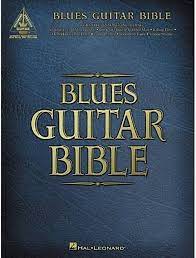 |
Blues Guitar Bible 35 Great Blues Songs (Guitar with TABs) |
| Blues Guitar Collection with Tablature by Scott Henderson |
 |
Blues Guitar Collection with Tablature by Scott Henderson |
| Blues Guitar For Dummies (eBook) |
 |
|
| Blues Guitar Play Along Vol. 7 with audio MP3 with Tablature |
 |
Blues guitar play along |
| Blues Guitar, The Anthology of (by Woody Mann) |
 |
Blues Guitar, The Anthology of (by Woody Mann) |
| Blues Hanon – Theory Development Application by Leo Alfassy |
 |
Blues Hanon – Theory Development Application by Leo Alfassy |
| Blues In F Joey Alexander Feat. Wynton Marsalis Sextet Jazz In Marciac 2015 sheet music transcription |
 |
|
| Blues Keyboard – Around Midnight – 14 Blues Pour Piano |
 |
Blues Keyboard |
| Blues Piano Gustavo Villegas (Spanish- Español) |
 |
Blues.Piano |
| Blues Piano For Beginners by Mark Harrison |
 |
Blues Piano For Beginners by Mark Harrison |
| Blues Piano Keyboard arr. Michat Kirkoff |
 |
|
| Blues Piano Legends |
 |
Blues Piano Legends |
| Blues Play A Long And Solos Collection For Piano Beginner series by Andrew D. Gordon |
 |
Blues Play A Long And Solos Collection For Piano by Andrew D Gordon |
| Blues Riffs For Piano by Ed Baker (Great Riff series) |
 |
|
| Blues Rock for Classical Guitar | Blues Rock for Classical Guitar | |
| Blues To Jazz GuitarThe Essential by Jack Eskridge The essential guide to chords, progressions and theory |
 |
|
| Blues You Can Use – Guitar Chords – John Ganapes |
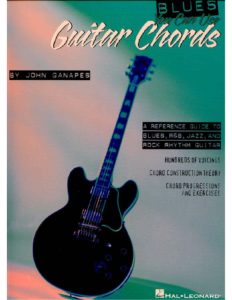 |
|
| Blues-Rock Guitar Bible 35 Blues-Rock Songs (Guitar with TABs) |
 |
Blues-Rock Guitar Bible 35 Blues-Rock Songs (Guitar with TABs) |
